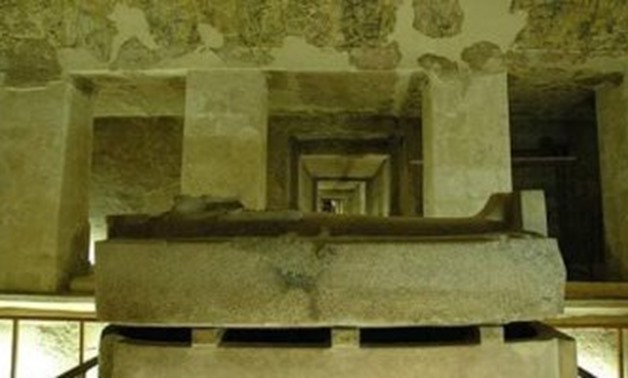
File - One of the inaugurated tombs.
CAIRO – 8 September 2019: The Egyptian Ministry of Antiquities inaugurated two archaeological tombs at the necropolis of Dra' Abu el-Naga' in Luxor after the completion of their restoration on Sunday, September 8.
The ministry also opened an exhibition at Luxor Museum at Assasef area. On the sidelines of this exhibition,Queen Twosret's coffin will be displayed for the first time after its transfer from the Valley of Kings to Luxor Museum.
The exhibition will include as well a collection of antiquities discovered in the region of Assasef.
In 2018, the Egyptian-American archaeological mission in the Assasef region held a similar exhibition to display the findings of the mission's excavations in the region, which included the canopic pots of Lady Aminardis, which were used for mummification.
The Assasef area is located on the western mainland of Luxor, close to the Temple of Hatshepsut at Deir el-Bahari, South of the necropolis of Dra' Abu el-Naga' within the group of Thebes cemeteries.
According to the official website of the Egyptian Ministry of Antiquities, Assasef cemetery includes a collection of individual graves, most of which date back to the 18th, 25th and 26th dynasties.
Moreover, some tombs spanning back to the Fifth Dynasty were discovered, and the area was used as a royal cemetery in the second half of the 11th Dynasty.
Most recently, an archaeological cemetery to a person named ThaoOrkhet F, and the original entrance of cemetery number TT28 have been discovered in the region.
Found on the walls of the tomb were inscriptions of some family members, including the wife of the cemetery owner, Ta-Kharo or Sekhmet-Nefert, who was a chanter for Amun.
The cemetery contained two wooden coffins. One of them was for a person named Ba-de-Est, son of Nes-Ba-Roti. The second coffin was for a woman called Ness-Mut-Ankhi, who is also a chanter for Amun.
The cemetery also contained two statues made of wood, in addition to a thousand Ushabtis made of Alvians, wood and burned clay.
Additionally, five colored wooden masks were discovered in the cemetery, in addition to two canopies made of limestone, an alabaster vessel, remains of human bones, and part of a papyrus with Chapter 125 of the Book of the Dead.
Furthermore, the joint mission between the French Institute of Oriental Archeology and the University of Strasbourg, which works on the western mainland around the cemetery Beta Menop in the northern region of the Assasif cemetery, found a sandstone painting, and two wooden coffins dating back to the 17th and 18th dynasties.
One of the coffins was opened for journalists to observe the mummy inside.
In June 2018, the Egyptian-American joint Mission in the South Assasef Cemetery Restoration Project unveiled a set of canopies of alabaster at the Karabskin Cemetery (TT391), with lids in various forms including human, monkey, falcon and jackal.

Comments
Leave a Comment